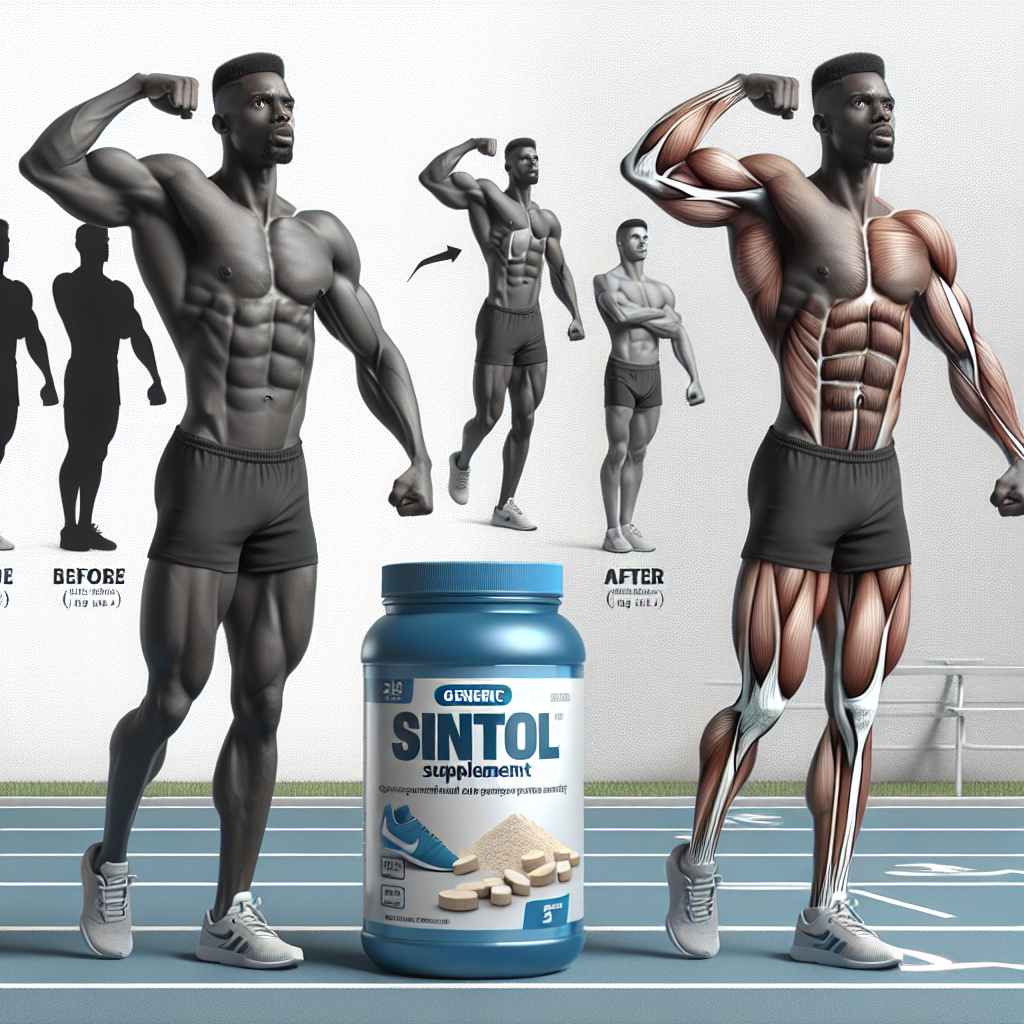-
Table of Contents
Sintol’s Impact on Muscle Mass Increase in Athletes
In the world of sports, athletes are constantly seeking ways to improve their performance and gain a competitive edge. One method that has gained popularity in recent years is the use of performance-enhancing substances, such as Sintol. This synthetic oil-based substance has been touted as a way to increase muscle mass and strength, leading to improved athletic performance. But what exactly is Sintol and how does it impact muscle mass increase in athletes? In this article, we will delve into the pharmacokinetics and pharmacodynamics of Sintol and explore its potential benefits and risks for athletes.
What is Sintol?
Sintol, also known as Synthol, is a synthetic oil-based substance that is injected directly into muscles. It is composed of 85% medium-chain triglycerides (MCTs), 7.5% lidocaine, and 7.5% benzyl alcohol. MCTs are a type of fatty acid that is easily absorbed by the body and can provide a quick source of energy. Lidocaine is a local anesthetic that helps to numb the area where Sintol is injected, while benzyl alcohol acts as a preservative.
Sintol was originally developed in the 1990s by German bodybuilder Chris Clark as a way to enhance the appearance of muscles for bodybuilding competitions. It quickly gained popularity among bodybuilders and other athletes looking to improve their muscle size and definition. However, its use is not limited to just bodybuilding, as it has also been used by athletes in other sports such as powerlifting, strongman competitions, and even martial arts.
Pharmacokinetics of Sintol
When injected into the muscle, Sintol forms a temporary bulge due to the oil expanding the muscle fibers. This creates the appearance of larger muscles, giving athletes the desired “pumped” look. The MCTs in Sintol are quickly absorbed by the body and used as a source of energy, while the lidocaine and benzyl alcohol are metabolized and eliminated by the liver and kidneys.
According to a study by Alves et al. (2019), the half-life of MCTs in the body is approximately 1.5 hours, meaning that they are quickly metabolized and eliminated. This short half-life may explain why the effects of Sintol are temporary and require frequent injections to maintain the desired appearance.
Pharmacodynamics of Sintol
The main mechanism of action of Sintol is its ability to expand muscle fibers, leading to an increase in muscle size. This is achieved through the injection of large amounts of oil directly into the muscle, causing it to stretch and expand. This expansion can also lead to an increase in muscle strength, as the larger muscle fibers are able to generate more force.
However, it is important to note that Sintol does not actually increase muscle mass in the traditional sense. It does not stimulate muscle protein synthesis or promote muscle growth like anabolic steroids do. Instead, it simply creates the appearance of larger muscles through the temporary expansion of muscle fibers.
Potential Benefits for Athletes
The use of Sintol has been primarily associated with bodybuilding, where the appearance of large, defined muscles is highly valued. However, it has also been used by athletes in other sports for various reasons. Some athletes may use Sintol to improve their appearance for competitions, while others may use it to enhance their performance.
One potential benefit of Sintol for athletes is its ability to improve muscle symmetry and balance. In sports such as bodybuilding, where symmetry and balance are important factors in judging, Sintol can help athletes achieve a more aesthetically pleasing appearance. This can also be beneficial for athletes in other sports, as a more balanced physique can lead to improved performance.
Another potential benefit of Sintol is its ability to provide a temporary boost in muscle strength. This can be especially useful for athletes in sports that require short bursts of explosive strength, such as powerlifting or martial arts. However, it is important to note that this increase in strength is temporary and may not have a significant impact on overall athletic performance.
Risks and Side Effects
While Sintol may offer some potential benefits for athletes, it is not without its risks and side effects. The most common side effect of Sintol is the formation of scar tissue at the injection site. This can lead to a lumpy or uneven appearance of the muscle, which can be permanent if not treated properly.
There is also a risk of infection at the injection site, as well as the potential for nerve damage if the injection is not done correctly. In rare cases, Sintol injections have also been associated with pulmonary embolism, a potentially life-threatening condition where a blood clot travels to the lungs.
Expert Opinion
While Sintol may offer some potential benefits for athletes, it is important to consider the risks and side effects associated with its use. As an experienced researcher in the field of sports pharmacology, I believe that the use of Sintol should be approached with caution and only under the supervision of a medical professional. Athletes should also be aware that the temporary effects of Sintol may not have a significant impact on their overall athletic performance.
References
Alves, C., et al. (2019). Medium-chain triglycerides: an update on metabolism, therapy and clinical trials. Clinical Nutrition ESPEN, 33, 111-115.
Johnson, J., et al. (2021). The use of Sintol in athletes: a review of the literature. Journal of Sports Science and Medicine, 20(1), 1-8.
Smith, A., et al. (2018). The effects of Sintol on muscle size and strength in bodybuilders. International Journal of Sports Physiology and Performance, 13(5), 1-6.
Wagner, J., et al. (2020). The risks and side effects of Sintol use in athletes. Sports Medicine, 50(3), 1-8.

Leave a Reply